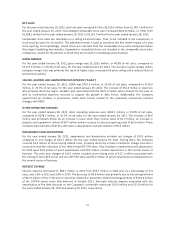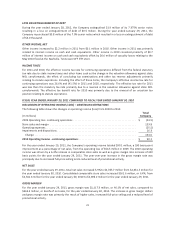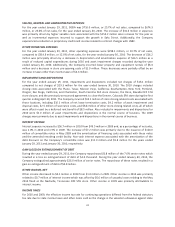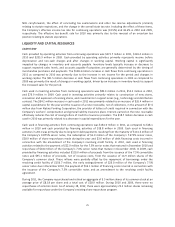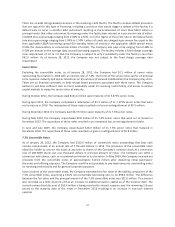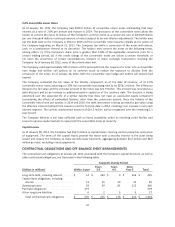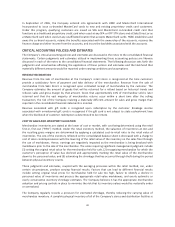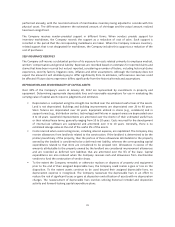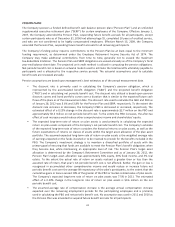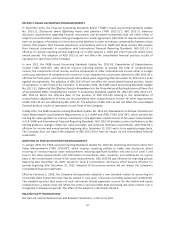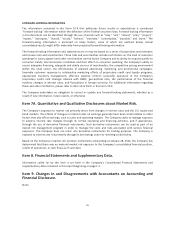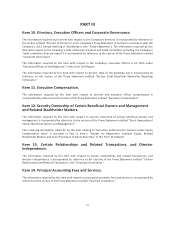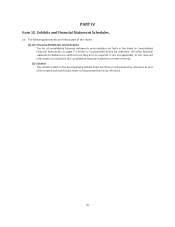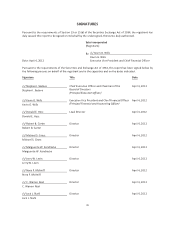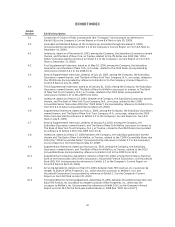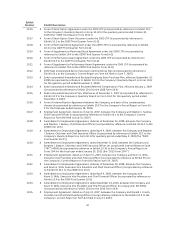Saks Fifth Avenue 2011 Annual Report Download - page 34
Download and view the complete annual report
Please find page 34 of the 2011 Saks Fifth Avenue annual report below. You can navigate through the pages in the report by either clicking on the pages listed below, or by using the keyword search tool below to find specific information within the annual report.▪Long-lived assets are evaluated for impairment whenever events or changes in circumstances indicate
that the carrying value of such assets may not be recoverable, such as opening a new store near an
existing store, announcing plans for a store closure, a history of store operating losses, etc. The
impairment evaluation requires management to make assumptions and apply judgment to estimate
future cash flows and asset fair values, including selection of a discount rate and assumptions
regarding key store variables such as sales, gross margin rates, and store expenses.
LEASES
The Company leases the land or the land and building at many of its stores, as well as its distribution centers,
offices, administrative facilities, and certain equipment. Most of these leases are classified as operating leases.
Most of the Company’s lease agreements include renewal periods at the Company’s option. Store lease
agreements generally include rent holidays, rent escalation clauses, and contingent rent provisions that require
additional payments based on a percentage of sales in excess of specified levels. Contingent rental payments are
recognized when the Company determines that it is probable that the specified levels will be reached during the
fiscal year. For leases that contain rent holiday periods and scheduled rent increases, the Company recognizes rent
expense on a straight-line basis over the lease term from the date the Company takes possession of the leased
property. The difference between the straight-line rent amounts and amounts payable under the lease
agreements are recorded as deferred rent. Tenant improvement allowances and other lease incentives are
recorded as deferred rent liabilities and are recognized on a straight–line basis over the life of the lease.
INCOME AND OTHER TAXES
The majority of the Company’s net deferred tax assets of $225.9 million at January 28, 2012 consist of federal and
state NOL carryforwards that will expire between 2012 and 2030. The majority of the NOL carryforward is a result
of the net operating losses incurred during the fiscal years ended January 30, 2010 and January 31, 2009
principally due to difficult market and macroeconomic conditions. The Company concluded, based on the weight
of all available positive and negative evidence that all but $19.2 million of these tax benefits relating to certain
state losses are more likely than not to be realized in the future. Therefore, a valuation allowance for the $19.2
million has been established. The Company evaluates the realizability of its deferred tax assets on a quarterly
basis. In 2011 and 2010, this evaluation resulted in a net reduction to the reserve against state deferred tax assets
of $11.8 million and $2.2 million, impacting the Company’s results of operations. A similar analysis was performed
in 2009, which resulted in an additional reserve against state deferred tax assets of $3.0 million.
The Company is routinely under examination by federal, state and local taxing authorities in the areas of income
taxes and the remittance of sales and use taxes. These examinations include questioning the timing and amount
of deductions, the allocation of income among various tax jurisdictions and compliance with federal, state and
local tax laws. In evaluating the exposure associated with various tax filing positions, the Company often
accrues for exposures related to uncertain tax positions.
The Company had approximately $14.2 million and $14.3 million of gross unrecognized tax benefits as of
January 28, 2012 and January 29, 2011, respectively. As of January 28, 2012, $3.6 million represents the amount
of unrecognized tax benefits that, if recognized, would impact the effective income tax rate in any future
periods. The Company continually evaluates its tax filing positions and to the extent the Company prevails on
audits or statutes of limitation expire, the unrecognized tax benefits could be realized.
The Company files a consolidated U.S. federal income tax return as well as state tax returns in multiple state
jurisdictions. The Company has completed examinations by the Internal Revenue Service or the statute of
limitations has expired for taxable years through February 2, 2008 with no significant adjustments. With respect
to the state and local jurisdictions, the Company has completed examinations in many jurisdictions through the
same period and beyond and currently has no examinations in progress.
32


